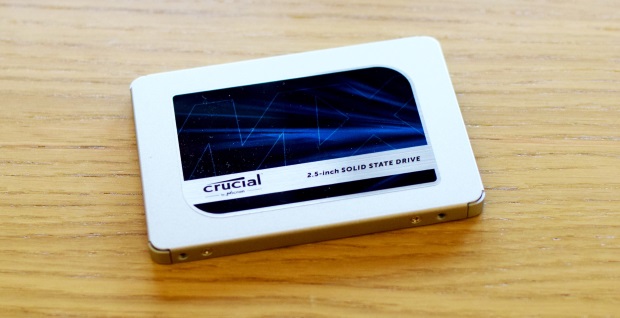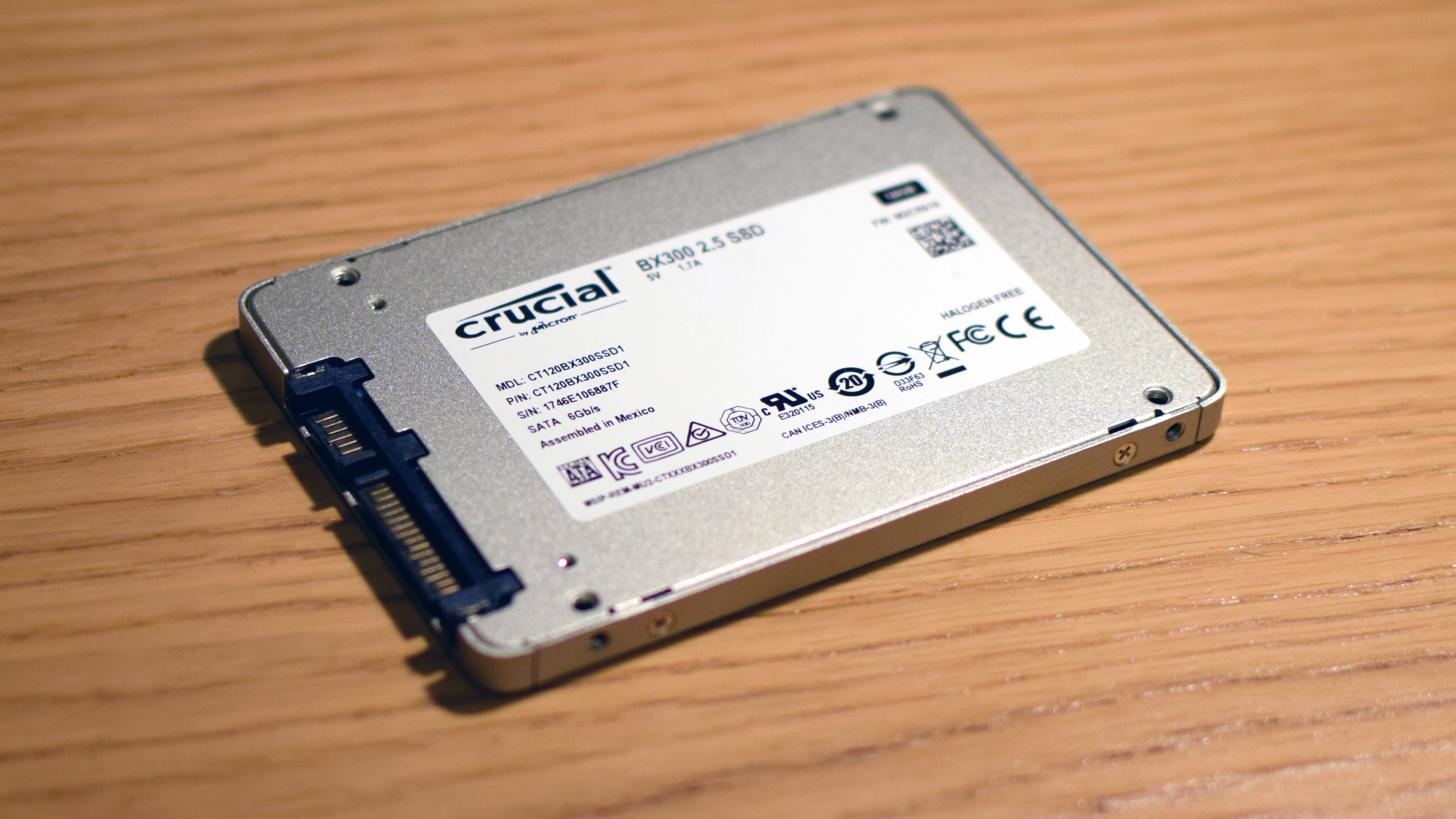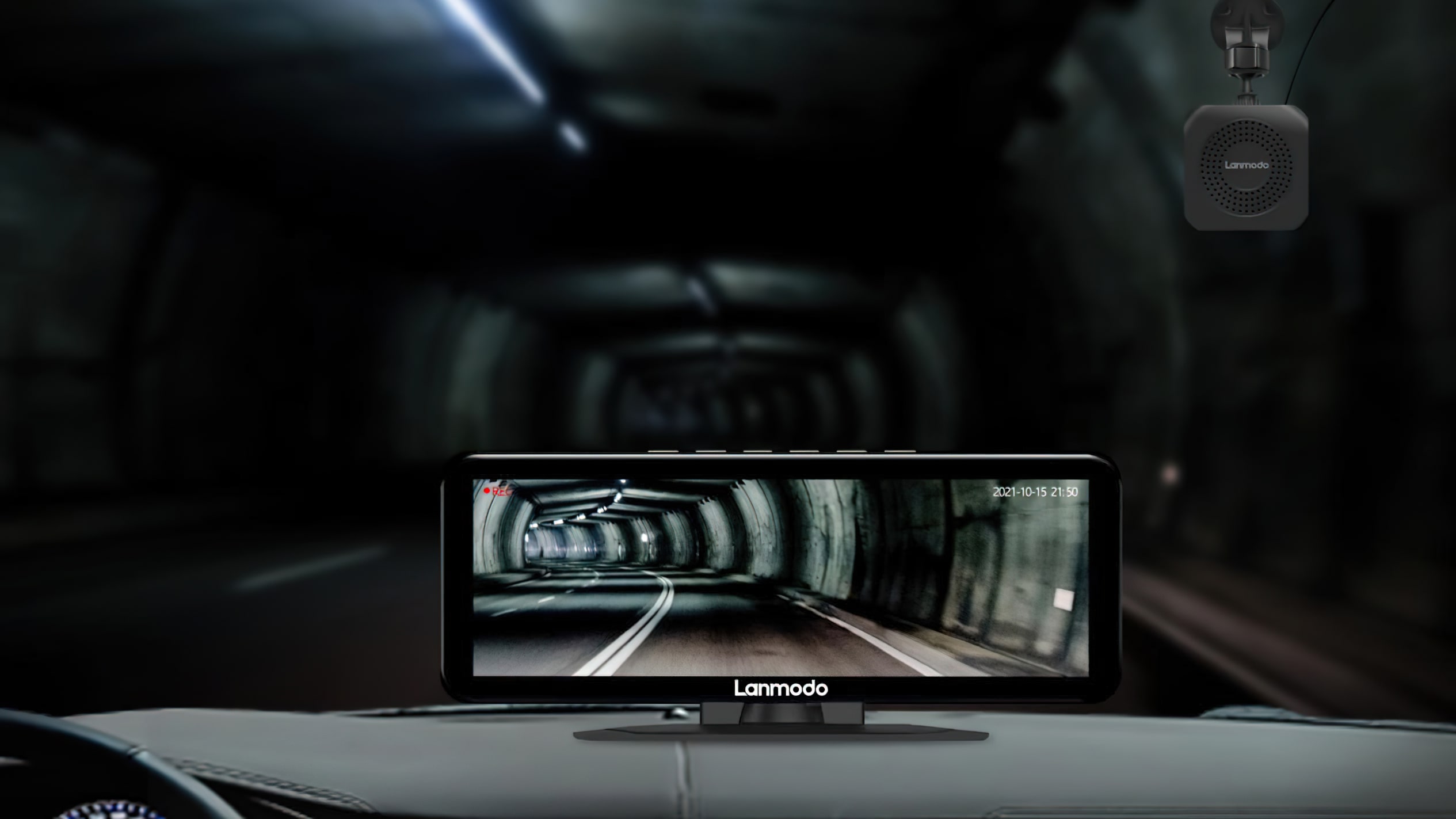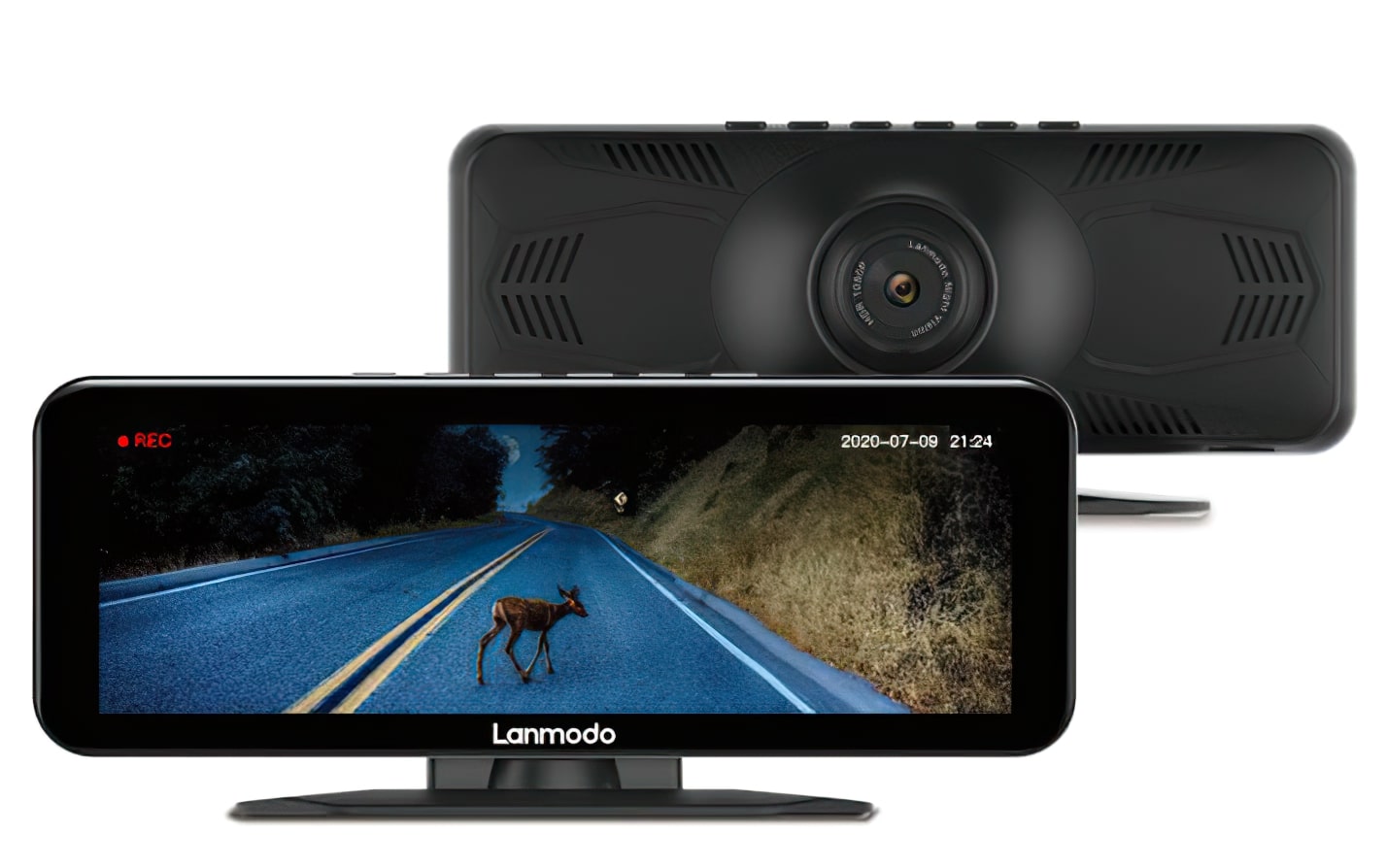
This 12 months’s greatest gaming SSDs noticed some mad value drops towards the tip of 2018, partly off the again of November’s Black Friday gross sales bonanza but in addition as a result of manufacturing prices have been quickly falling ever since late summer time. With costs set to plummet even additional in 2019 as nicely, it is a nice time to start out fascinated by upgrading your PC’s storage capabilities with a pleasant, new SSD drive.
To that finish, I’ve written this helpful information that will help you discover the perfect gaming SSD on your PC. Below you’ll discover all my high suggestions for the perfect SSDs for gaming throughout a spread of costs, together with your customary 2.5in SATA drives in addition to your fancy M.2 NVMe jobs. And simply in case none of these phrases made any sense, I’ve additionally included some in-depth shopping for recommendation on every little thing you must learn about all the different sorts of SSD and their varied type elements, in addition to what dimension it is best to go for. Whether it’s for gaming, putting in Windows or the quickest speeds cash can purchase, I’ve received you coated.
Best gaming SSD underneath £50 / $50: Crucial MX500 (250GB)
Previously, Crucial’s entry-level BX300 SSD occupied this place on our greatest gaming SSD listing, however at time of writing its MX500 sibling is a a lot better deal. Prices aren’t simply decrease for the MX500, however you’re additionally getting double the storage on your cash, too – 250GB versus 120GB on the £43 / $30 BX300. Admittedly, the scenario seems to be worse within the UK than throughout the pond, however when a 240GB BX300 will set you again an extortionate $70 within the US, the MX500 nonetheless comes out as the higher worth SSD.
In phrases of efficiency, the MX500 is second solely to Samsung’s costlier 860 Evo, which you’ll discover additional down on this listing. Its random learn and write speeds are a few of the greatest round, and far sooner than its different important rival, the WD Blue 3D NAND. The MX500 additionally comes with a beneficiant 5 12 months guarantee, too, providing you with peace of thoughts in case one thing occurs to go unsuitable.
Of course, should you’re trying to hold prices to an absolute minimal, you could be tempted by Crucial’s different entry-level SSD, the BX500. After all, this prices simply £28 / $39 for 240GB at time of writing, making it less expensive than the MX500. However, the BX500’s random learn and write speeds merely don’t examine with the MX500, so I’d strongly beneficial discovering room in your finances for one more £10 / $20 should you can. You gained’t remorse it.
Read our Crucial MX500 review for more information.

Best gaming SSD underneath £100 / $100: Samsung 860 Evo (500GB)
Despite not being that a lot sooner than its predecessor, the Samsung 850 Evo, the 860 Evo stays the most effective gaming SSDs round. Its random learn speeds are sooner than another 2.5in SATA3 SSD I’ve examined up to now, and its guarantee and endurance score are additionally high of their respective lessons.
The solely SSD I’ve examined with a sooner random write velocity is Samsung’s 860 Qvo, however the smallest dimension obtainable on that one is 1TB, thereby making it significantly costlier because of this. That mentioned, the 860 Qvo actually comes into its personal at larger capacities, as the way in which it’s been constructed is all about getting as a lot storage as potential for the least sum of money. Indeed, it’s far cheaper than the 860 Evo when you begin pushing into the 1TB and 2TB classes (and arguably makes extra sense than shopping for a smaller SSD to have as your main drive and a bigger however infinitely slower onerous disk drive for storing games on), so I’d advocate choosing the Qvo as an alternative of the Evo should you’re after one thing bigger than 500GB.
For these trying to hold SSD prices to underneath £100 / $100, nonetheless, the 500GB Samsung 860 Evo is certainly the way in which to go. Not solely is it sooner than Crucial’s MX500, significantly in relation to random write speeds, but it surely additionally comes with a a lot larger endurance score: 300 terabytes written (TBW) for the 500GB mannequin versus simply 180TBW on the 500GB MX500. It’s quick, sturdy and I’ve but to see one other 500GB SSD beat it in relation to total worth.
Read our Samsung 860 Evo review for more information.
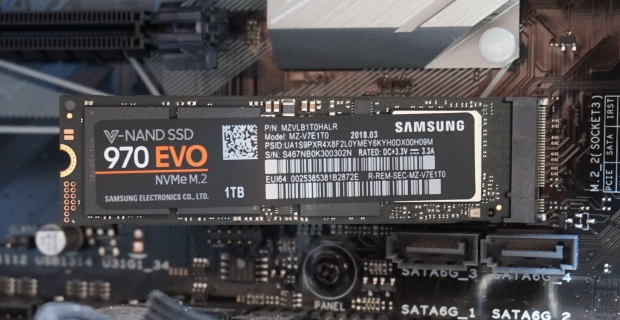
Best gaming SSD underneath £200 / $200: Samsung 970 Evo (500GB)
Yes, it’s one other Samsung. If you actually need the perfect of the perfect SSDs that cash can purchase and would somewhat mount it straight onto your motherboard than faff round with SATA cables, the Samsung 970 Evo is the final word gaming SSD for tidy individuals with a lot of cash to spend. Technically, Samsung’s extra upmarket 970 Pro is the superior drive on this class, however you’ll hate your self so much much less by choosing the considerably cheaper and nonetheless blisteringly quick Evo mannequin.
Since that is solely obtainable in an M.2 type issue, you’ll want to ensure your motherboard helps it before you purchase one. Most fashionable motherboards do, although, so supplied you’ve received a spare M.2 slot prepared and ready, the 970 Evo is undoubtedly the perfect and most reasonably priced method to get a style of what NVMe SSDs have to supply.
Available in 250GB, 500GB, 1TB and 2TB dimension capacities, the 970 Evo is a massive step up out of your typical 2.5in SATA3 SSD. Capable of dealing with heavy learn and write queues in over 1400MB/s, that is an SSD for the final word energy consumer. You don’t fairly get these kinds of speeds for smaller, on a regular basis duties, thoughts, however you’re nonetheless taking a look at considerably sooner learn and write speeds (28% and 42% respectively) than Samsung’s 860 Evo.
Speed-wise, the 970 Evo additionally comfortably sees off the competitors from WD Black 3D NVMe SSD and Adata XPG SX6000 Pro, however the WD will nonetheless do you simply high-quality should you’d somewhat save a bit of money within the course of.
Read our Samsung 970 Evo review for more information.
Best exterior gaming SSD: Samsung T5
Did somebody say Samsung once more? I do know, I do know, I’m beginning to sound like a damaged file right here, however truthfully the Samsung T5 is the perfect exterior SSD I’ve examined up to now. Granted, I’ve solely appeared on the WD My Passport SSD as a degree of comparability up to now (one thing I’m going to rectify in 2019), however of the 2, the T5 is certainly the one I’d go for. It’s not solely cheaper than the WD My Passport, but it surely’s additionally a lot sooner and an infinitely nicer wanting factor in addition.
It’s costly, sure, particularly in comparison with your typical 2.5in SATA3 drive, however should you’re the kind of one that travels so much and doesn’t have sufficient room for all of your games in your laptop computer, the T5 is a worthwhile funding. For starters, it’s completely tiny and can simply slot into any form of pocket. What’s extra, the actual fact it’s an SSD means it’s additionally far much less prone to break than an exterior onerous disk drive.
The T5 additionally comes with each USB3 and USB-C connectors for tremendous quick switch speeds, and its random learn and write speeds are fairly good too. It’s nowhere close to as nippy as Samsung’s 860 Evo, however when it comes to total comfort, nothing else comes shut.
Read our Samsung T5 review for more information.
Best gaming SSD information: Form elements defined
2.5in SSDs: The best drop-in substitute for the standard onerous disk is a 2.5in SATA mannequin. These are the identical dimension and form as a regular 2.5in onerous disk, and plug into a standard SATA port in your motherboard. Most fashionable PC circumstances have mounting factors for two.5in onerous disks, typically on the again of the motherboard tray. If yours doesn’t, you should utilize a £5 adaptor (actually only a 3.5in-wide steel plate with screw holes) to suit the SSD in a standard 3.5in onerous disk bay.
To keep away from crippling the SSD’s efficiency, ensure you plug the SSD right into a SATA Three port in your motherboard, somewhat than use SATA 2. SATA Three SSDs will work in SATA 2 ports, however you’ll possible lose round half the SSD’s efficiency.
The chief drawback of two.5in SSDs, in comparison with the mSATA, M.2 and PCI Express playing cards mentioned under, is that they use SATA 3: an interface that’s been round since 2009, and one which isn’t fast sufficient to deal with the quickest fashionable SSDs. However, for many customers, a SATA Three SSD will probably be high-quality, and nonetheless a number of instances sooner than a mechanical onerous disk.
M.2 and PCIe SSDs: If you’re available in the market for a super-fast SSD that gained’t be encumbered by its interface, you must transfer past SATA to PCI Express, or PCIe (additionally referred to as PCIe NVMe or simply NVMe). Most PCIe SSDs are mounted on to the motherboard in an M.2 slot. If your motherboard doesn’t have such a slot, there’s just one method to unleash the velocity: a PCIe add-in card, or AIC. These add-in playing cards will slot in a spare PCIe x4 or x16 slot, and are monstrously fast, in addition to monstrously costly: whereas a 240GB SATA3 SSD will price you about £80, an equal dimension PCIe card will probably be over £150. This is the value you pay for nearly 4 instances the efficiency in sure conditions.
If you’ve a more recent motherboard with an M.2 slot, an M.2 SSD is a neater method so as to add super-fast PCIe storage. Most M.2 SSDs are simply 22mm broad and 80mm lengthy (so a few third shorter than a stick of RAM) and screw straight into the motherboard – no extra having to route SATA and energy cables round your case.
However, the M.2 customary is a little bit difficult, mainly on account of its versatility. For starters, there are a number of sizes of M.2 card, resembling 2280 and 22110: the primary two digits denote the cardboard’s width in mm, and the remaining numbers are the cardboard’s size. Fortunately, the vast majority of shopper M.2 SSDs are the 2280 dimension. What’s extra, in addition to PCIe storage, the M.2 slot also can help SATA SSDs. These don’t have the efficiency benefit of PCIe M.2 drives, however rating for neatness, and are about the identical value as 2.5in SSDs. Check what requirements your motherboard helps, as PCIe SSDs is not going to work in SATA-only slots and vice versa.
The excellent news is that many motherboards help each PCIe and SATA M.2 SSDs, providing you with the flexibility to decide on between fast-but-expensive PCIe and slower (however nonetheless quick) and cheaper SATA. Bear in thoughts that the claimed speeds are for sequential transfers, somewhat than random reads and writes, so must be thought-about a best-case situation. It’s additionally price taking a look at a drive’s IOPS, or enter/output operations per second, score. This isn’t all the time listed in an SSD’s specs, however it could actually make a giant distinction to an SSD’s real-world efficiency. A drive with a excessive IOPS score can carry out many extra information reads and writes per second than a lower-rated mannequin, which might make an enormous distinction within the advanced information switch duties required by a contemporary working system.
mSATA SSDs: You’ll additionally see a number of mSATA SSDs on the market. The mSATA interface is an older interface that M.2 was designed to exchange. MSATA drives are tiny (51x30mm), have primarily the identical efficiency as 2.5in and M.2 SATA Three drives, and are about the identical value. If you’ve a motherboard (or laptop computer) with an mSATA connector, an mSATA drive is certainly price a glance.
What dimension SSD do I would like?
One of the primary stuff you’ll discover when purchasing for an SSD is that they’re an terrible lot costlier than mechanical onerous disks. Spinning disks are astounding worth, with 1TB fashions obtainable for £40; in order for you a terabyte SSD, you’ll have to seek out over £250. For this motive, should you’re on any form of finances, you’ll want to consider how a lot capability you want. The minimal dimension SSD I’d advocate is 250GB, as this will provide you with room for Windows, your productiveness purposes and some games – though the 120GB Crucial BX300 listed above will nonetheless do you simply high-quality so long as you aren’t planning on putting in multiple or two games on it as nicely.
If you’ve a big picture and music assortment that takes up round 100GB, say, it’s in all probability price bumping it as much as the 500GB mark. With Windows (round 20GB), Office (round 3GB), 5 or so massive games and all my footage and tunes, you’ll nonetheless have about 80GB left on such an SSD – and games are solely going to get larger, too. If you wish to have greater than a few massive titles put in directly with out compromising on load instances, you could wish to take into account discovering the money for a 1TB SSD. Some high-performance SSDs are faster at bigger capacities as nicely, on account of having extra flash chips for the SSD controller to entry in parallel.
If you want extra space, it could be price utilizing your SSD alongside a standard onerous disk, and even the onerous disk you at present personal. You can use the SSD for Windows, purposes and games, and put your space-hungry recordsdata on the onerous disk. By default the Windows Users folders, so Documents, Pictures, Videos and so forth, will probably be on the system (C) drive, however you possibly can redirect them to a different disk by right-clicking every folder, choosing Properties, then Location. However, redirecting your Users folders away from their default places can typically trigger issues; if I used to be going to make use of the SSD/onerous disk combo, I’d simply create customary folders for the massive recordsdata I wished to maintain on the onerous disk, and keep away from the corresponding Users folders totally.
